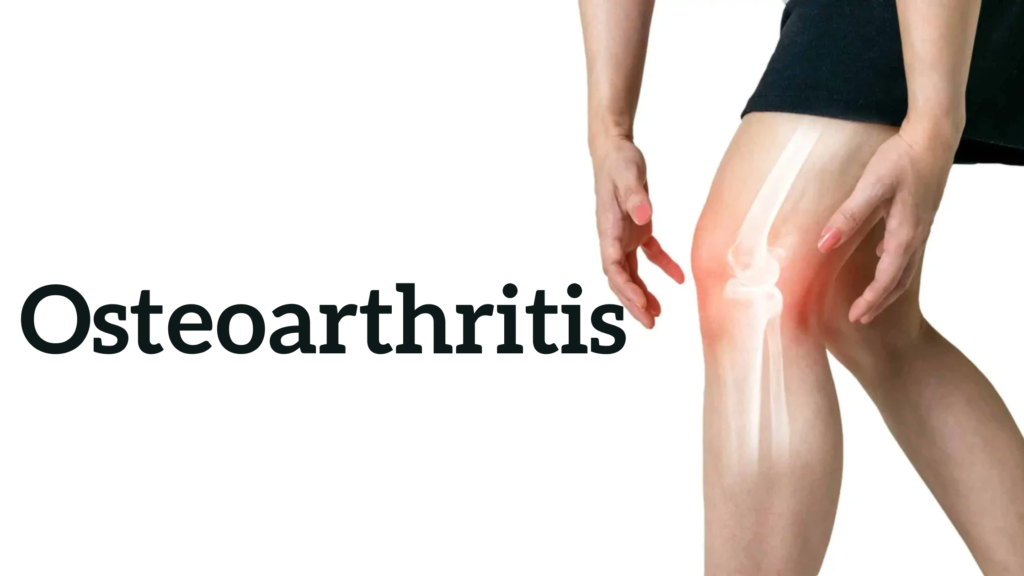🦴 Osteoarthritis (OA)
Osteoarthritis is the most common form of arthritis, characterized by the gradual breakdown of cartilage in joints. It leads to pain, stiffness, swelling, and reduced mobility, mostly in older adults.
📉 What Happens in OA?
- The cartilage that cushions the ends of bones wears away over time.
- Bone rubs against bone, causing pain and stiffness.
- The joint may develop bony spurs (osteophytes) and fluid buildup.
📍 Commonly Affected Joints:
- Knees
- Hips
- Hands (especially finger joints)
- Spine (neck and lower back)
- Feet (especially big toe)
🧬 Causes & Risk Factors:
- Age – Risk increases with age
- Joint injury or overuse
- Obesity – Extra weight stresses joints
- Genetics/family history
- Gender – More common in women
- Certain occupations – Repetitive stress on joints
🩺 Symptoms:
- Joint pain (worse with activity, better with rest)
- Stiffness, especially after rest or in the morning
- Swelling or tenderness
- Grating or cracking sound during movement
- Decreased flexibility or range of motion
- Joint deformity in advanced cases
🔍 Diagnosis:
- Medical history and physical exam
- X-rays – Show joint space narrowing, bone spurs
- MRI – Rarely needed but may assess cartilage or soft tissue
- Joint fluid analysis – To rule out infection or gout
💊 Treatment:
There is no cure, but many options help manage symptoms:
🩹 Non-drug therapies:
- Exercise (strengthening, low-impact)
- Weight loss
- Physical therapy
- Bracing or orthotics
- Heat/cold therapy
💊 Medications:
- Acetaminophen or NSAIDs (e.g., ibuprofen)
- Topical analgesics
- Corticosteroid injections
- Hyaluronic acid injections (limited benefit)
🦿 Surgery:
- Joint replacement (e.g., knee, hip) in severe cases
- Osteotomy or joint realignment
